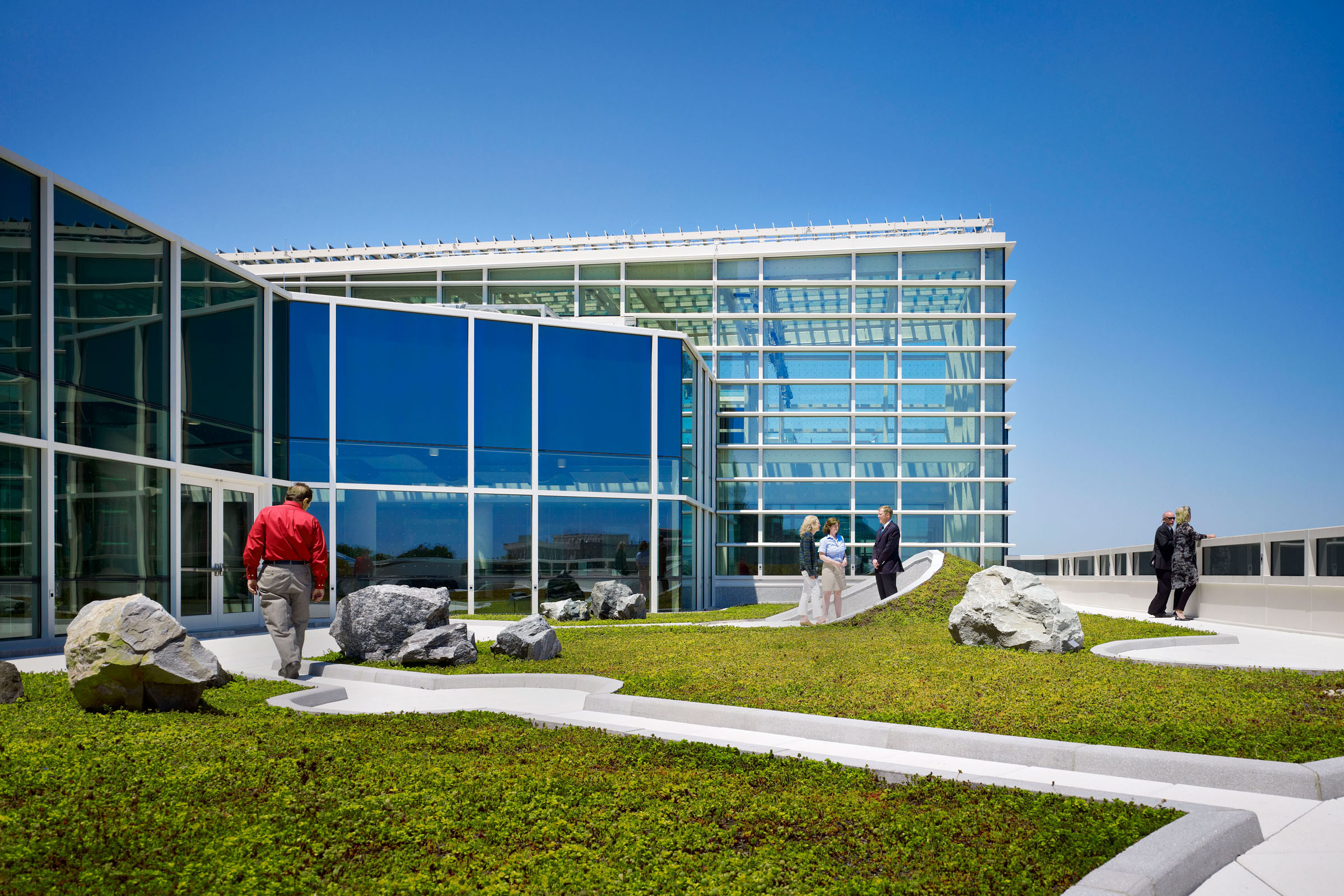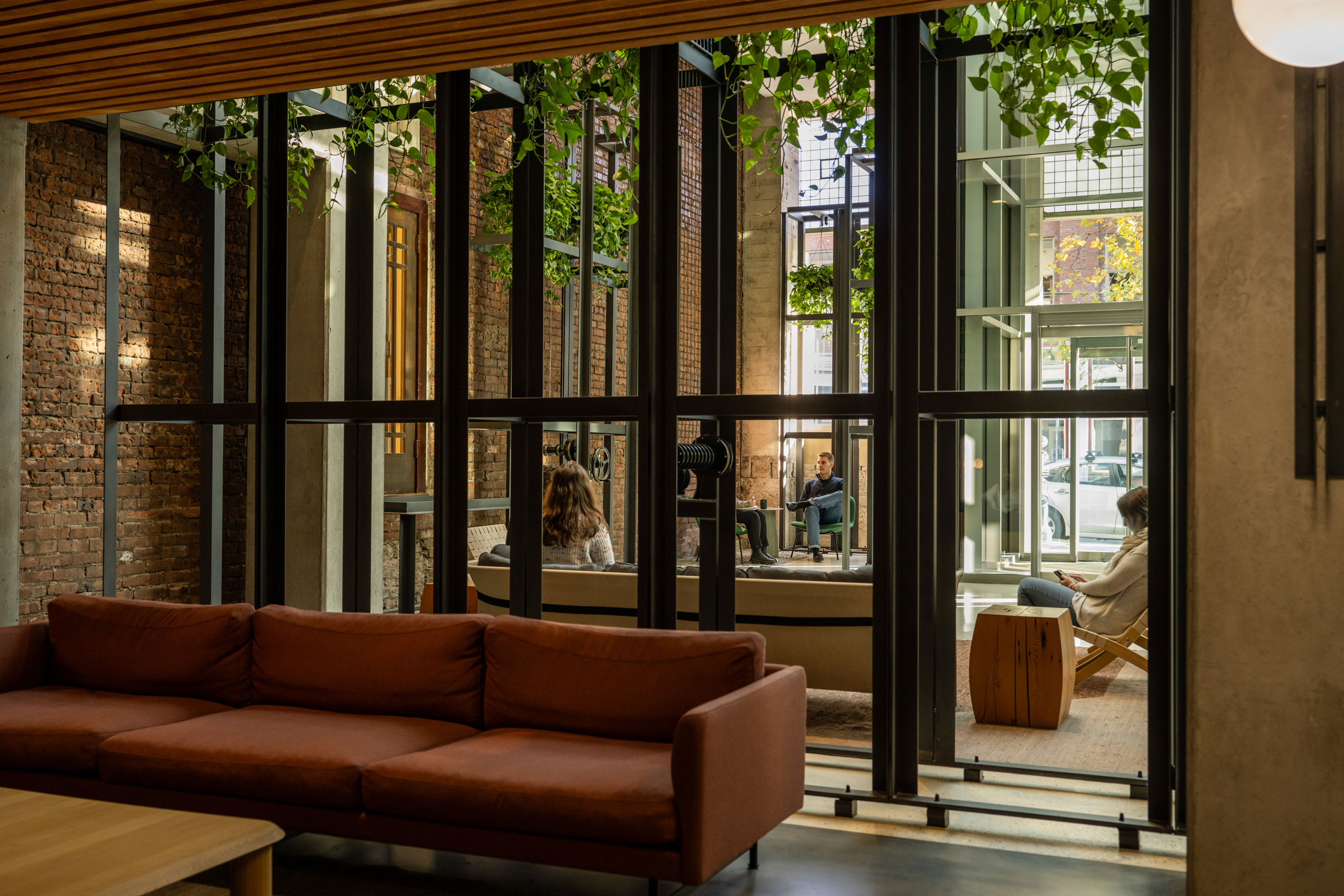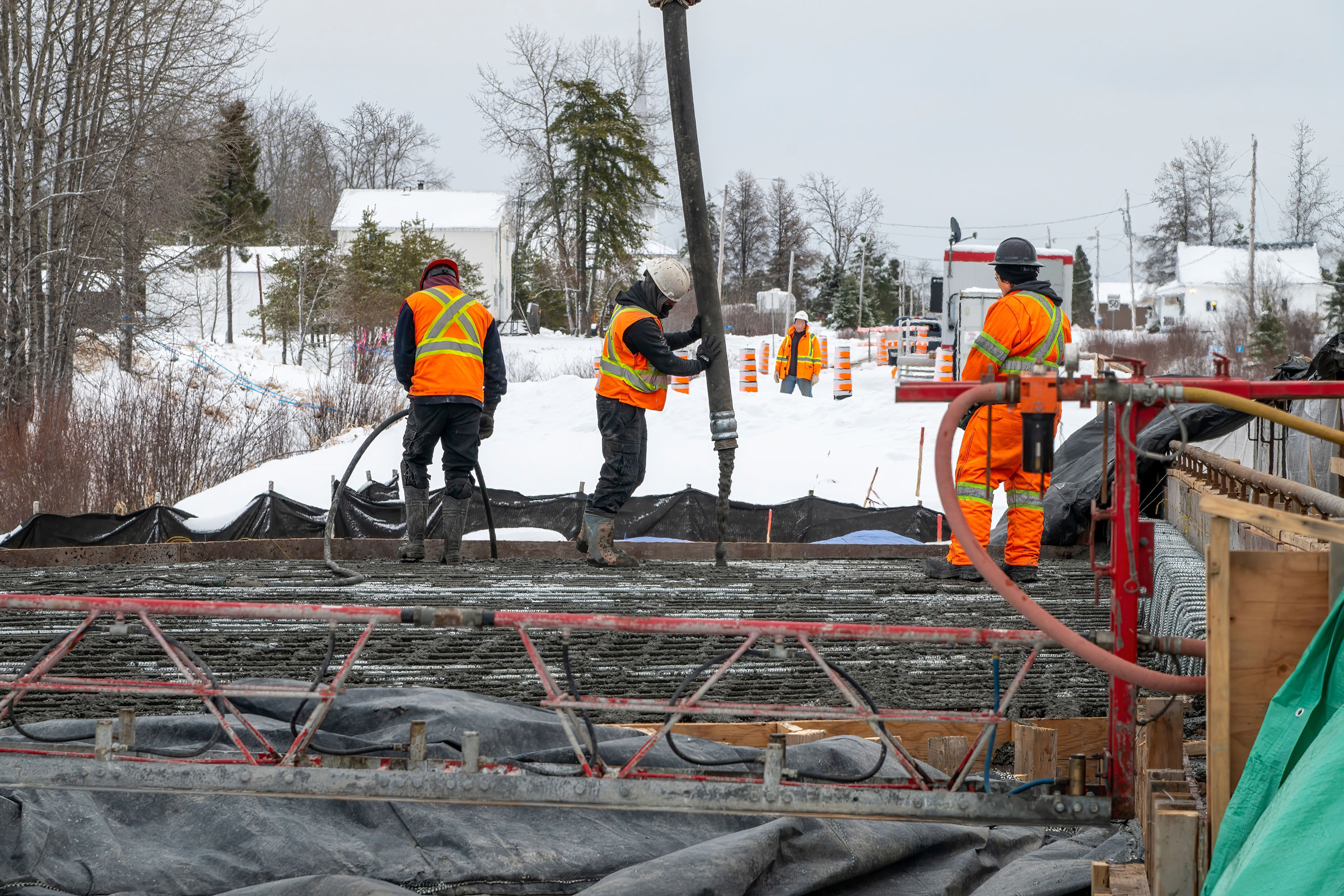Story at a glance:
- Urban commercial properties can benefit from the addition of a green roof in many ways.
- Green roofs can help reduce heating and cooling loads, block outside noise, and even improve employee productivity.
- Well-maintained green roofs also last longer than conventional roofs and can help attract tenants.
Of all the sustainable design trends that have emerged over the years, few are as recognizable—and impressive—as green roofs.
“Everybody seems to be fascinated by green roofs, whether they’re involved in the construction and design industry or not,” Bill Bellico, director of marketing and inside sales for Sika Sarnafil’s US operations, told gb&d in a previous interview. “They instantly appeal to human nature. The benefits are getting more widely understood and appreciated.”
These benefits may be enjoyed no matter where green roofs are installed, though they are particularly apparent in urbanized settings. In this article we’ll explore the many ways in which green roofs can benefit urban commercial properties.
What is a Green Roof?
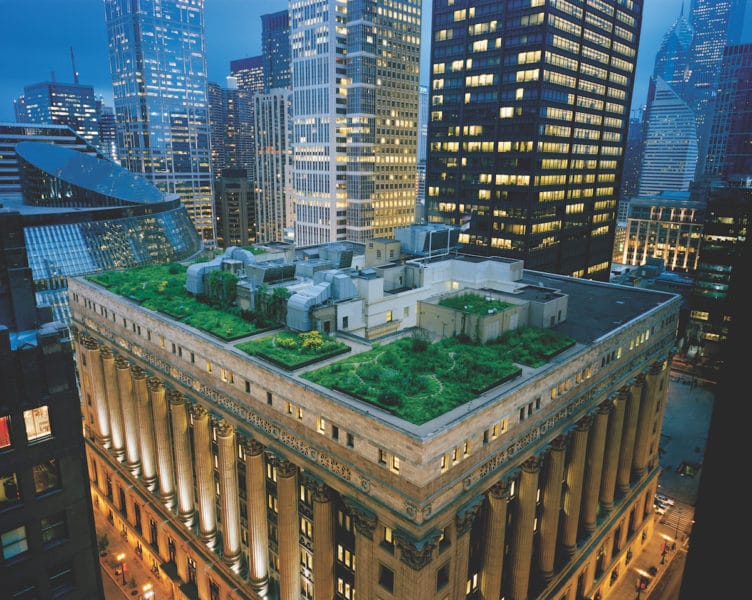
A green roof on Chicago’s City Hall. Photo courtesy of Sika Sarnafil
In architecture, a green roof is any roof that has been intentionally designed to include a substrate layer that can in turn support the growth of vegetation. As a general rule most modern green roofs are composed of seven distinct layers: a waterproofing membrane, root barrier, drainage layer, water retention layer, filter fabric, substrate/growing medium, and vegetation.
There are three basic types of green roofs—extensive, semi-intensive, and intensive—that differ primarily in terms of substrate depth, kinds of vegetation supported, and maintenance requirements.
- Extensive. Generally designed to be as hands-off as possible, making them ideal for areas that are difficult to access or that serve no other purpose; include native plant species that are self-sustaining and capable of weathering frost, drought, and lower nutrient levels; lightweight, as soil depth rarely exceeds 6 inches.
- Semi-intensive. Requires more upkeep than extensive green roof systems, but less maintenance than intensive green roof systems; can include a wider variety of plant species; soil depth generally falls between 6 to 12 inches.
- Intensive. Akin to rooftop gardens and require frequent maintenance; opens up an almost unlimited variety of plants that can be grown, particularly those with more specialized growing conditions, including shrubs and small trees; soil depth typically ranges between 12 to 36 or more inches.
All three types of green roof systems may be effectively implemented in urban settings, provided they are properly installed and maintained.
Green Roof Benefits in Urban Commercial Properties
Now that we have a better understanding of what green roofs are, let’s take a look at the benefits of installing green roofs in urban commercial projects.
Stormwater Mitigation & Reduced Risk of Urban Flooding
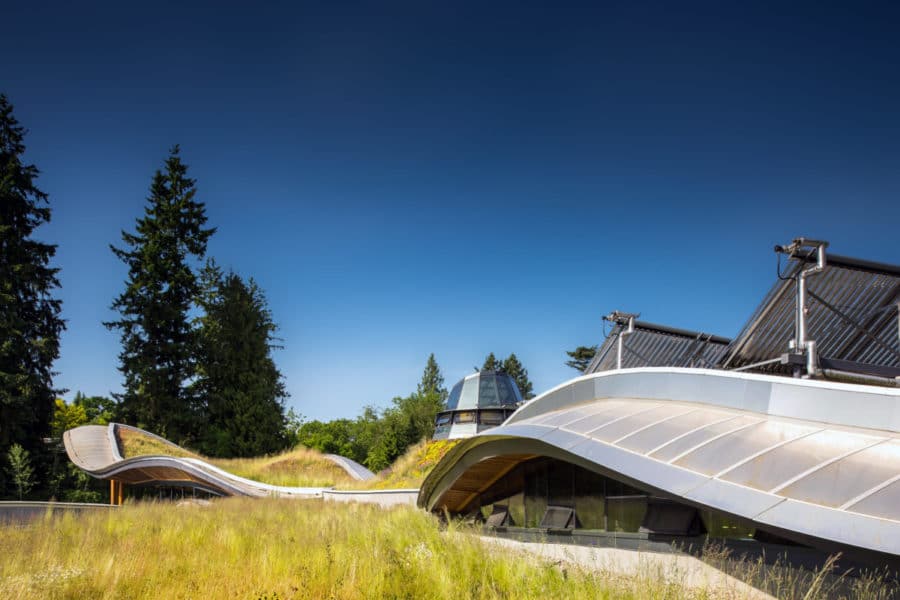
Photo by Brett Ryan Studios, courtesy of Architek
Thanks to their permeable soil and water retention layer, green roofs are able to absorb water like a sponge, storing all or a portion of that water for later use. Current research shows that green roof systems—even shallow extensive ones—are capable of reducing stormwater runoff by anywhere from 35.5 to 100% during any given period of rainfall, resulting in an average of approximately 68% water retention annually. This in turn helps reduce a building’s stormwater management costs.
In addition to reducing the amount of stormwater runoff, green roofs also slow the flow rate of runoff. On average green roofs reduce flow rate by as much as 65%, delaying runoff by up to three hours. Together, these two qualities help prevent municipal sewer systems and urban water bodies from overflowing, thereby decreasing the risk of urban flooding and flood-related damages.
This is particularly beneficial when you consider that urban flooding has become much more common—and costly—in recent years thanks to the rise in extreme weather events caused by anthropogenic climate change. Recent data released by the Senate Joint Economic Committee estimates that flooding costs the United States between $179.8 and $496.0 billion annually, with damages incurred as a result of urban flooding accounting for roughly 73% of those expenses.
Improved Urban Water Quality
Green roofs’ role in mitigating stormwater runoff comes with the additional benefit of improving the overall quality of urban water sources. As runoff infiltrates the substrate of a green roof, it naturally filters said runoff, helping to remove heavy metals, large particulate matter, and other debris before the water itself makes its way into the municipal sewer system or empties out into urban waterways.
By preventing certain contaminants from entering urban water sources, green roofs make it easier and less expensive for cities to treat said water for public use; this means that, when implemented at scale, green roofs can actually help keep the costs of municipal water down, saving commercial properties money on their monthly utility bills.
Passive Cooling
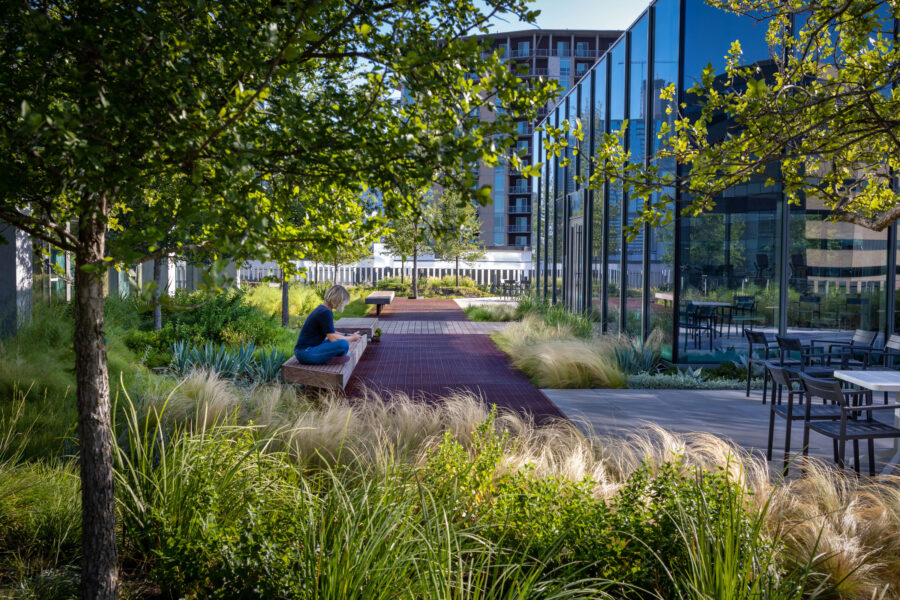
RiverSouth in Austin features a green roof that both keeps the building cool and gives people a place to escape. Photo by Casey Dunn
Commercial properties in urban contexts can also reap energy efficiency-related benefits from the installation of green roofs. Green roofs provide an added layer of thermal resistance and prevent solar heat transmission through a building’s rooftop materials, thereby reducing dependency on HVAC systems for heating and cooling. On average green roofs reduce air conditioning usage by 75% and heating usage by as much as 23%. This has the added benefit of lowering a building’s overall operating costs and reducing its greenhouse gas emissions.
Combats the Urban Heat Island Effect
Green roofs can also help lower outdoor temperatures via evapotranspiration, a natural process in which plants absorb water from the soil via their roots and then release it as water vapor through microscopic pores in their leaves. As this water evaporates, it absorbs heat from the air, thereby helping to reduce the urban heat island effect, or the phenomena by which urban areas experience higher average temperatures—anywhere from 1 to 7°F to 2 to 5°F higher, depending on the time of day—than rural areas.
These elevated temperatures are caused by the excessive distribution of dark-colored surfaces in cities and other urban centers. “The urban, built environment creates heat islands from its concentrations of concrete, steel, and other building materials that absorb solar energy and then radiate that collected energy into the local environment as heat,” Don Haynes, an environmental and sustainability manager for Florim USA, wrote in a previous article for gb&dPRO.
Evapotranspiration—combined with plants’ ability to reflect solar energy—helps green roofs counter the urban heat island effect and lessen its impacts. On average green roofs can be anywhere from 30 to 40°F cooler than traditional rooftops, and widespread green roof implementation can help reduce city-wide ambient temperatures by as much as 5℉, according to the EPA.
This in turn helps decrease the likelihood of heat-related illnesses and deaths while simultaneously reducing stress on municipal power grids by minimizing city-wide air conditioning demands, further saving commercial properties money on utilities while also reducing profit loss incurred as a result of power outages and/or rolling brownouts and blackouts interrupting business operations.
Reduced Ambient Noise
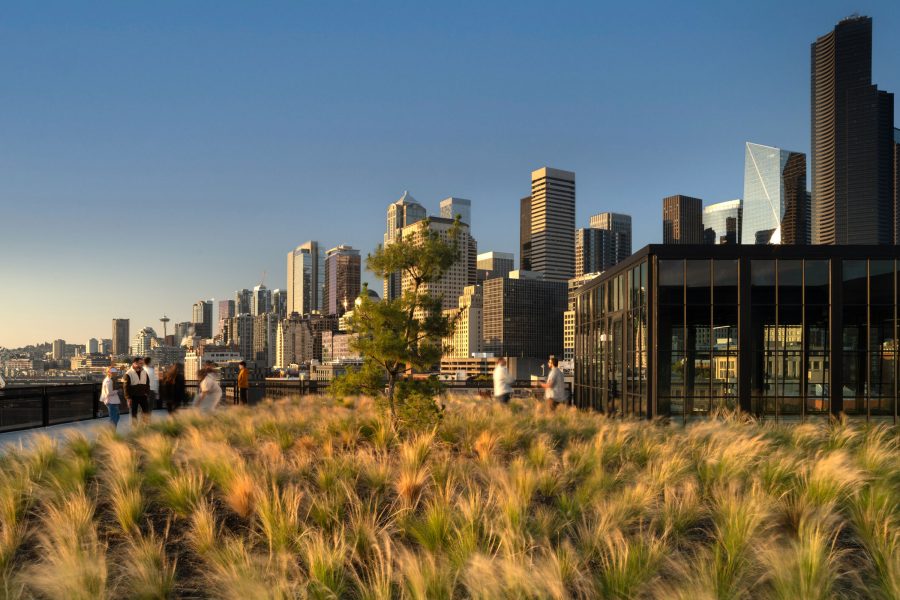
The rooftop deck is arranged into multiple glass pavilions focused around the central green roof. Photo by Nic Lehoux
In addition to acting as thermal insulators, green roofs also function as acoustic insulators, helping to reduce ambient noise in a building’s upper floors. “Green roofs absorb sound, resulting in quieter spaces—both inside and outside,” Michael T. Kozak, vice president of building materials and environmental products for Minerals Technologies, previously wrote for gb&d. “They are more efficient at reducing noise than traditional roofs, and even when used without ceiling insulation they can enhance noise reduction on the building’s upper levels.”
This is because green roofs are able to effectively block a range of noise frequencies. The plants themselves are adept at blocking higher frequencies (e.g. sirens, small vehicle motors, car alarms) whilst the dense-yet-permeable growing medium is well-suited to blocking lower frequencies like those produced by large vehicle engines, construction equipment, and airplanes.
By helping to prevent the intrusion of unwanted outside noise, green roofs reduce distractions in the workplace, improve productivity, and increase overall user satisfaction.
Longer Lifespan
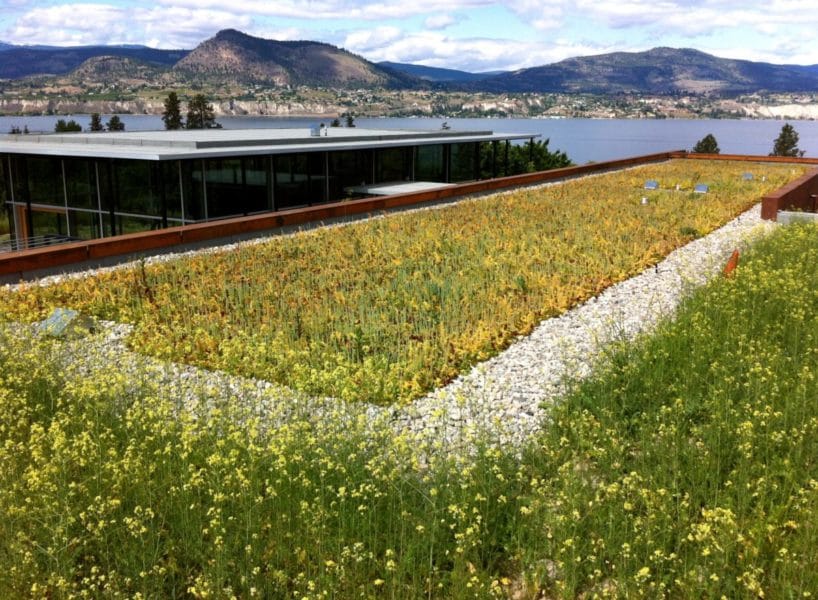
Green roof by Architek. Photo by Brett Ryan Studios
As long as they are properly installed and maintained, green roofs have an estimated lifespan double that of most conventional roof systems. “The average lifespan of a green roof is 40 years, compared to 17 years for a black roof,” writes Kozak. This is because the vegetative layer of green roofs helps protect the underlying roof structure from the elements and reduce the damaging effects of thermal stress.
By lasting twice as long as traditional roofs, green roofs help urban commercial properties save money on replacement materials over the course of their operational lifespans. This extended lifespan also reduces a building’s overall embodied carbon and minimizes the amount of construction waste sent to landfills.
Positive Effect on Occupant Health
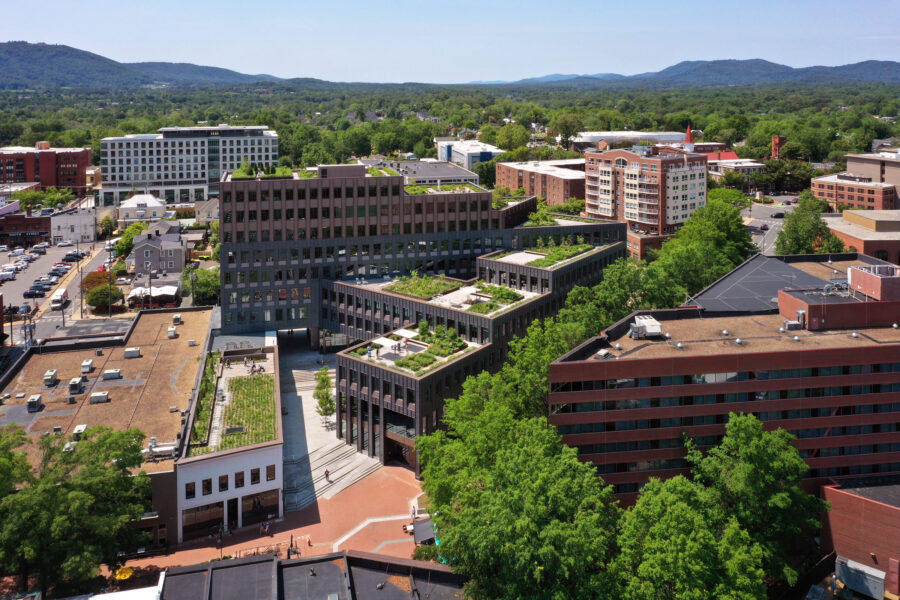
The LEED Platinum–certified Center of Developing Entrepreneurs (CODE) is a new mixed-use project in Downtown Charlottesville that creatively combines coworking and retail. Photo by Alan Karchmer
Studies have shown that proximity and access to green spaces can significantly improve one’s mental health. Most urban areas, however, have a relatively low percentage of green spaces, in large part due to poor planning and overdevelopment. Green roofs provide a convenient means of increasing a city’s overall square footage of green space, which in turn makes it easier for citizens to connect with the natural world.
“By offering an aesthetically pleasing landscape, green roofs can reduce stress and increase worker productivity for both building residents and the occupants of nearby buildings,” writes Kozak. “And by producing a healthier atmosphere, worker absenteeism declines. One recent study concluded that green buildings produce a net present value of $12 per gross square foot in terms of productivity and lower absenteeism.”
Accessible green roofs also provide opportunities for respite and relaxation during the day, allowing employees to go outside, get some fresh air, and feel the sun during breaks.
Opportunities for Urban Agriculture
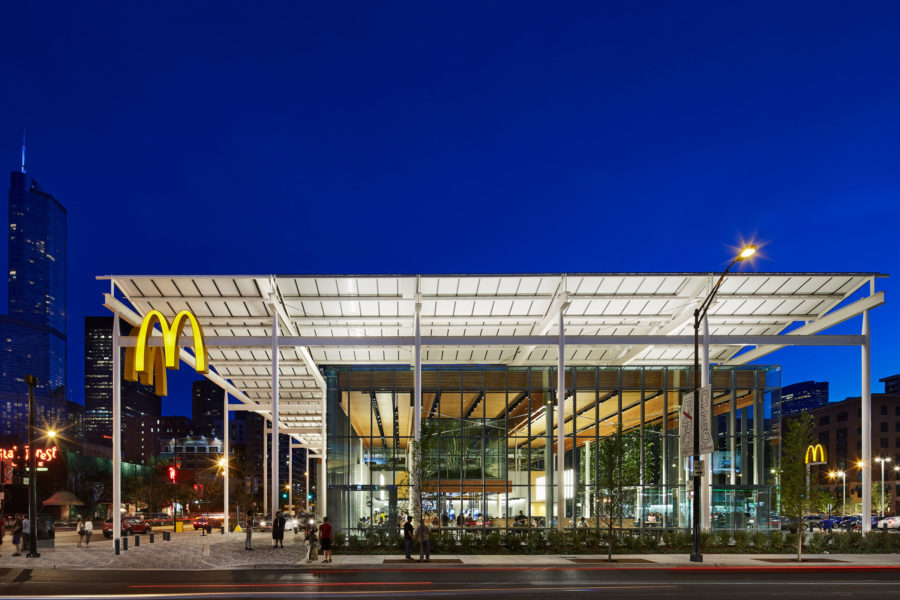
McDonald’s Chicago flagship location boasts two green roofs, one of which is used to grow a portion of the restaurant’s produce. Photo by Kendall McCaugherty, Hall+Merrick Photographers
Intensive green roofs can also provide opportunities for urban agriculture, with rooftop gardens and farms representing a potential source of added revenue—or increased savings, if the produce is used internally rather than sold—for commercial properties.
McDonald’s Chicago Flagship, for example, boasts multiple green roofs that double as urban gardens. “The green roofs are planted with harvestable trees and native plants. The rooftop orchard contains Honeycrisp and Gala apple trees ranging from 8 to 9 feet tall as well as edible plants, including arugula, broccoli, and carrots—all living within the orchard’s canopy,” Carol Ross Barney, founder and design principal of Ross Barney Architects, wrote in a previous gb&d article. “This food from the rooftop is harvested each fall.”
By growing a portion of the restaurant’s food, these green roofs ultimately help the McDonald’s Chicago Flagship location save money on produce and reduce emissions incurred as a result of transporting fresh ingredients from rural farms. Crops grown on green roofs are also much less susceptible to damage from insects and wildlife, further reducing expenses associated with pest control measures and crop loss.
Increased Property Value & Marketability
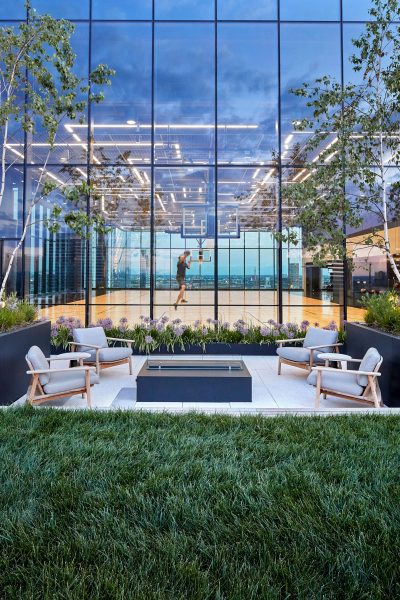
The roof deck of 167 Green Street offers views of downtown Chicago and an NBA size basketball court that opens onto a large terrace with prairie plants. Photo by Garrett Rowland
Finally, well-maintained and aesthetically-pleasing green roofs can—for all of the reasons listed above—help to increase the overall value of urban commercial properties and improve their marketability by appealing to sustainability-minded tenants and customers. This is especially true of green roofs installed on commercial properties in urban areas where green space is scarce, as they provide valuable amenity space that can’t be found elsewhere.

